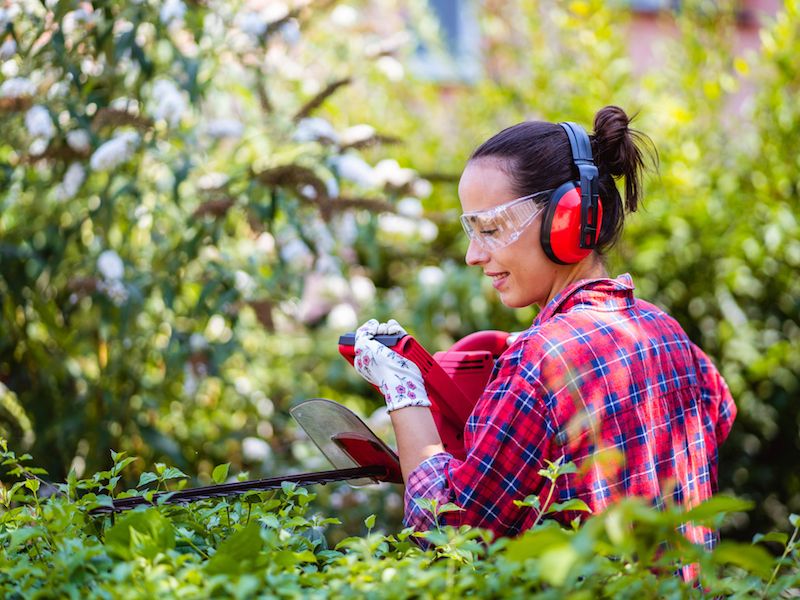
Eating right and safeguarding your hearing have some similarities. It sounds smart, but not many of us have a good idea of where to begin. If there aren’t any apparent noise dangers and you don’t think your environment is particularly loud, this is especially true. But daily life can put stress on your ears and your senses, so your auditory acuity can be preserved if you practice these tips.
The more you can do to slow the deterioration of your hearing, the longer you’ll be able to enjoy the sounds around you.
Tip 1: Wearable Hearing Protection
Using ear protection is the most practical and simple way to safeguard your hearing. This means taking basic actions to lessen the amount of loud and damaging noises you’re exposed to.
For many people, this will mean wearing hearing protection when it’s called for. Two general forms of protection are available:
- Ear Plugs, which are placed in the ear canal.
- Ear Muffs, which are placed over the ears.
Neither form of hearing protection is inherently better than the other. There are benefits to each type. Your choice of hearing protection should, most importantly, feel comfortable.
Tip 2: Know When Sound Becomes Harmful
But how do you know when to use hearing protection? We’re used to linking harmful noise with painful noise. But the truth is that noise can begin to damage your ears at a much lower level than you might anticipate. After just a couple hours, for instance, the sounds of traffic are enough to damage your ears. A vital step in protecting your hearing, then, is knowing when sound becomes dangerous.
The following threshold is when sound becomes harmful:
- 95-100 dB: This is the normal volume of your earbuds or the level of farm equipment. This level of sound becomes damaging after 15-20 minutes.
- Over 100 dB: Your ears can be very rapidly injured by this. Injury is done in around thirty seconds with sounds over this threshold. As an example, jet engines and rock concerts will injure your ears in 30 seconds.
- 85 decibels (dB): This volume of sound is harmful after around two hours of exposure. Your hairdryer or a busy city street are both scenarios where you will find this level of sound.
Tip 3: Your Phone Can Be a Sound Meter
Now that we have a general idea of what levels of sound may be dangerous, we can take some precautions to ensure we limit our exposure. But in everyday life, it can be challenging trying to measure what is too loud and what isn’t.
That’s where your smartphone can become a handy little tool. There are dozens of apps for iPhone, Android, and everything in between that turn your device’s microphone into a sound meter.
Having a live sound meter with you will help you evaluate everything you’re hearing in decibels, so you’ll have a much better idea of what harmful levels actually sound like in your day-to-day life.
Tip 4: Keep an Eye on Your Volume Buttons
The majority of people these days listen to music via their phone or smart device, and they normally use earbuds while they do it. This sets up a dangerous situation for your hearing. Over years of use, earbuds set to a sufficiently high volume can cause significant damage to your hearing.
That’s why safeguarding your ears means keeping a sharp eye on your volume control. In order to drown out noises elsewhere, you should not raise the volume. in order to make sure that volume doesn’t get too high, we suggest using volume settings or app settings.
If your hearing begins to decline, earbuds can become something of a negative feedback loop; in order to compensate for your declining hearing, you could find yourself continuously increasing the volume of your earbuds, and in the process doing more harm to your ears.
Tip 5: Have Your Hearing Examined
You might think of a hearing test as something you get when your hearing has already started to diminish. Without a standard to compare results to, it’s not always easy to identify a problem in your ears.
Creating data that can be used for both diagnostic applications and for treatment can be best achieved by scheduling a hearing exam and screening. This will give you a little extra context for future hearing choices and ear protection.
Keep an Eye on Your Hearing
It would be ideal if you could continuously protect your hearing without any problems. But challenges are always going to be there. So whenever you can and as often as possible, protect your ears. Also, get regular hearing examinations. Hopefully, these tips will help you get a good start.